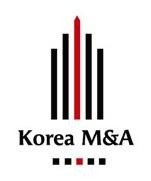Notice
Recent Posts
Recent Comments
| 일 | 월 | 화 | 수 | 목 | 금 | 토 |
|---|---|---|---|---|---|---|
| 1 | 2 | 3 | 4 | |||
| 5 | 6 | 7 | 8 | 9 | 10 | 11 |
| 12 | 13 | 14 | 15 | 16 | 17 | 18 |
| 19 | 20 | 21 | 22 | 23 | 24 | 25 |
| 26 | 27 | 28 | 29 | 30 | 31 |
Tags
- OTCBB
- capital gate
- Malaysia
- Merger
- case study
- sk
- Korea M&A
- Letter of intent
- cgi korea
- taiwan
- LOTTE
- Confidential Agreement
- Acquistion
- nda
- China Construction Bank
- acquisition
- private equity
- Japan
- Investment
- Bank
- M&A
- Korea
- China
- securities
- LOI
- CA
- PEF
- hong kong
- buyout
- Japan Tobacco
Archives
- Today
- Total
Korea M&A Corporation
M&A Case Studies for “Invest Japan” from JETRO 본문
M&A Case Studies for “Invest Japan”
~ Successful Alliances with Japanese Companies ~
Introduction
In response to the need to promote foreign investment in Japan to revitalize the Japanese
economy, mergers and acquisitions (M&A) involving Japanese and overseas companies
have been increasing rapidly, aided by an improved investment environment in Japan,
including the establishment of favorable legal systems and deregulation measures. Since
the late 1990s, M&A activities have made up a greater part of overseas investment in
Japan. Successful cases of restructuring Japanese companies through M&As using
foreign capital are also increasing, leading to the revival of the Japanese economy.
However, resistance to M&A using foreign capital persists among many Japanese
companies. A number of foreign companies have also recognized that it is difficult for
M&As to succeed in Japan, mainly due to the different culture.
The Japan External Trade Organization (JETRO) has conducted case studies on
successful M&A projects in Japan by foreign companies to analyze M&A patterns and
strategies that have brought about win-win alliances to both foreign and Japanese
partners. We examined the backgrounds of overseas companies entering Japan, impacts
on management resulting from M&As, emerging problems, and future challenges.
When selecting candidates for M&A study, we attempted to take up not only large
companies but also medium-size ones, and to cover a wide range of business categories
from manufacturers to financial and other services. In addition, we chose a case in
which a business was rehabilitated by a foreign investment fund.
We hope the results of these case studies will help Japanese and overseas businesses
plan and pursue future M&A strategies, and will ultimately contribute to a further
increase of foreign investment projects in Japan.
The case studies are based on interviews with personnel from the related companies
obtained during the research period, as well as published information and data, from
December 2003 to March 2004.
March 2004
Invest Japan Department,
Japan External Trade Organization
~ Successful Alliances with Japanese Companies ~
Introduction
In response to the need to promote foreign investment in Japan to revitalize the Japanese
economy, mergers and acquisitions (M&A) involving Japanese and overseas companies
have been increasing rapidly, aided by an improved investment environment in Japan,
including the establishment of favorable legal systems and deregulation measures. Since
the late 1990s, M&A activities have made up a greater part of overseas investment in
Japan. Successful cases of restructuring Japanese companies through M&As using
foreign capital are also increasing, leading to the revival of the Japanese economy.
However, resistance to M&A using foreign capital persists among many Japanese
companies. A number of foreign companies have also recognized that it is difficult for
M&As to succeed in Japan, mainly due to the different culture.
The Japan External Trade Organization (JETRO) has conducted case studies on
successful M&A projects in Japan by foreign companies to analyze M&A patterns and
strategies that have brought about win-win alliances to both foreign and Japanese
partners. We examined the backgrounds of overseas companies entering Japan, impacts
on management resulting from M&As, emerging problems, and future challenges.
When selecting candidates for M&A study, we attempted to take up not only large
companies but also medium-size ones, and to cover a wide range of business categories
from manufacturers to financial and other services. In addition, we chose a case in
which a business was rehabilitated by a foreign investment fund.
We hope the results of these case studies will help Japanese and overseas businesses
plan and pursue future M&A strategies, and will ultimately contribute to a further
increase of foreign investment projects in Japan.
The case studies are based on interviews with personnel from the related companies
obtained during the research period, as well as published information and data, from
December 2003 to March 2004.
March 2004
Invest Japan Department,
Japan External Trade Organization
Comments

 invalid-file
invalid-file